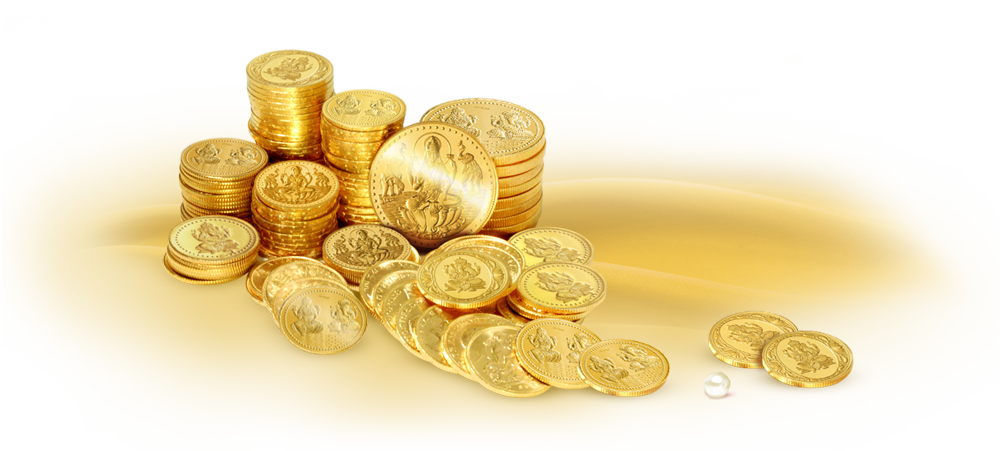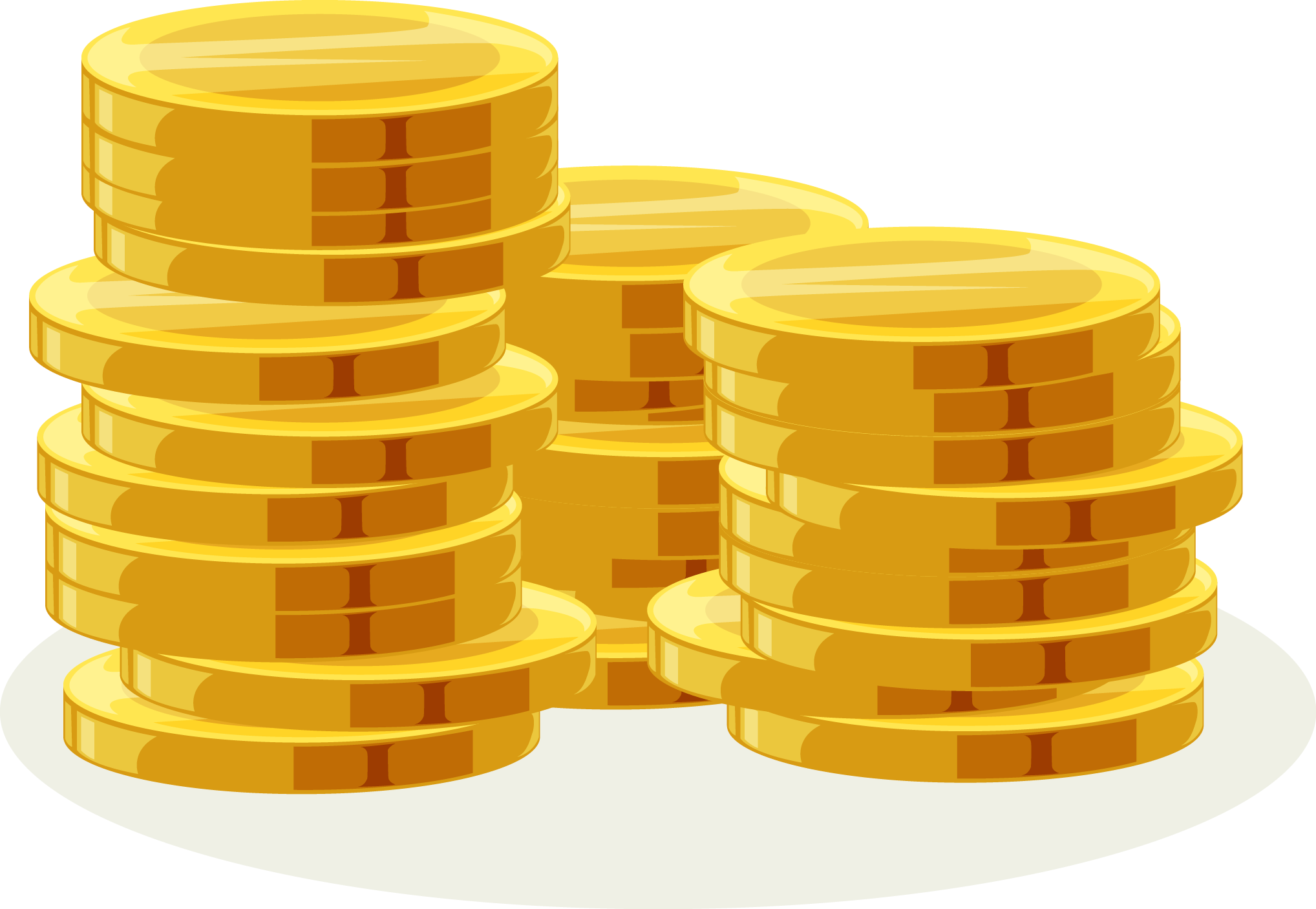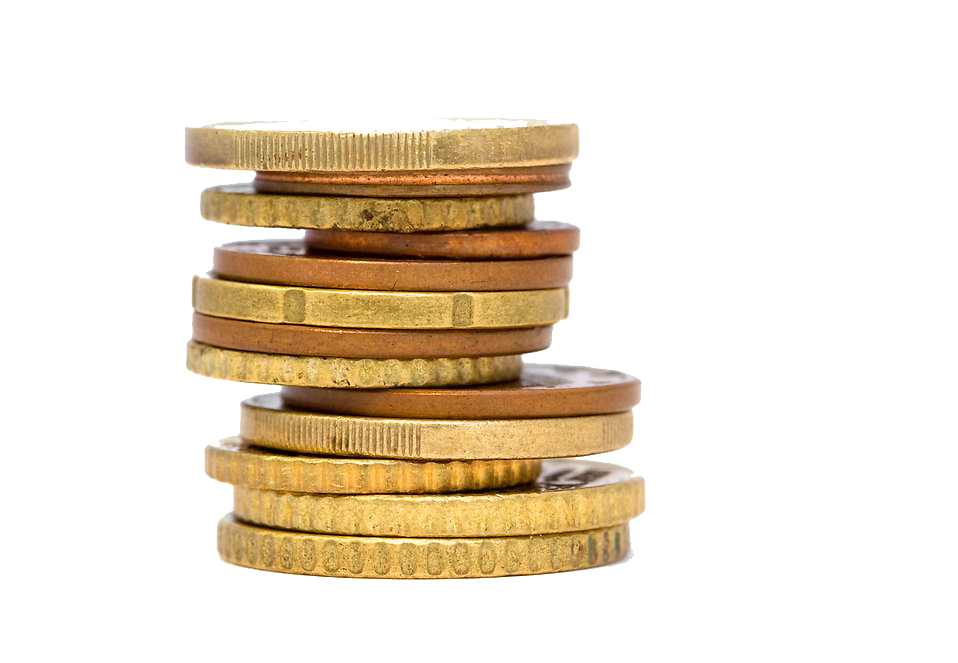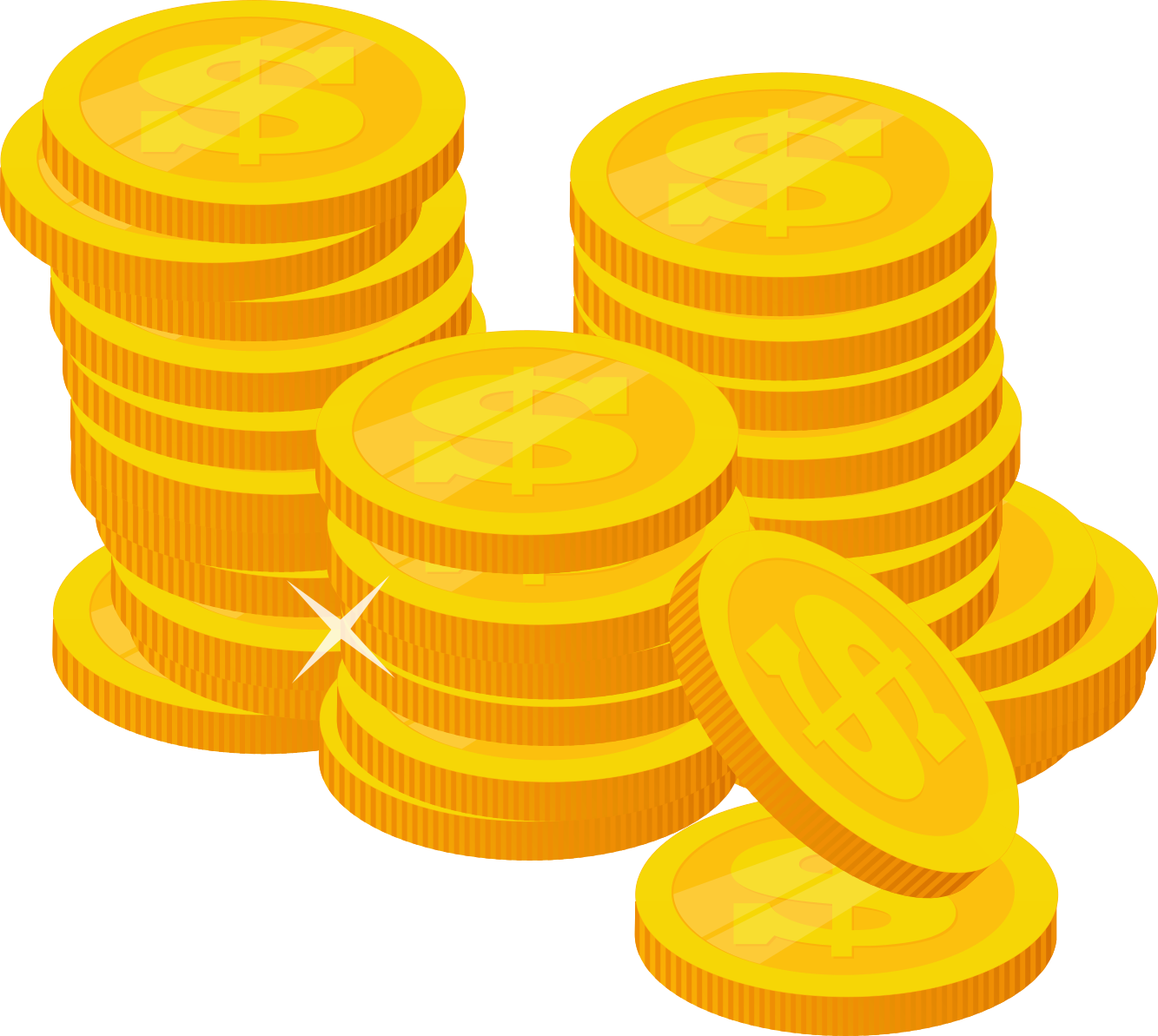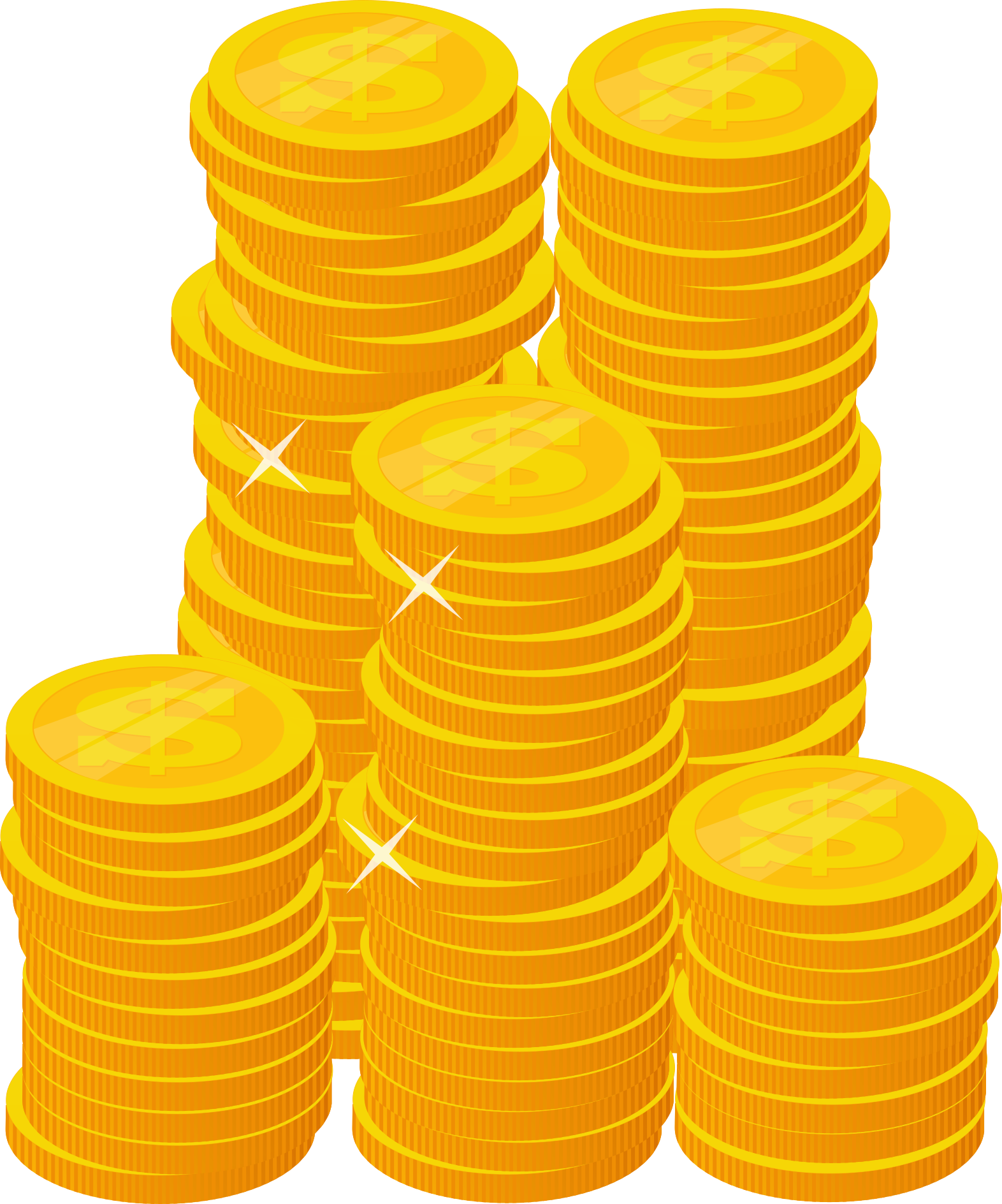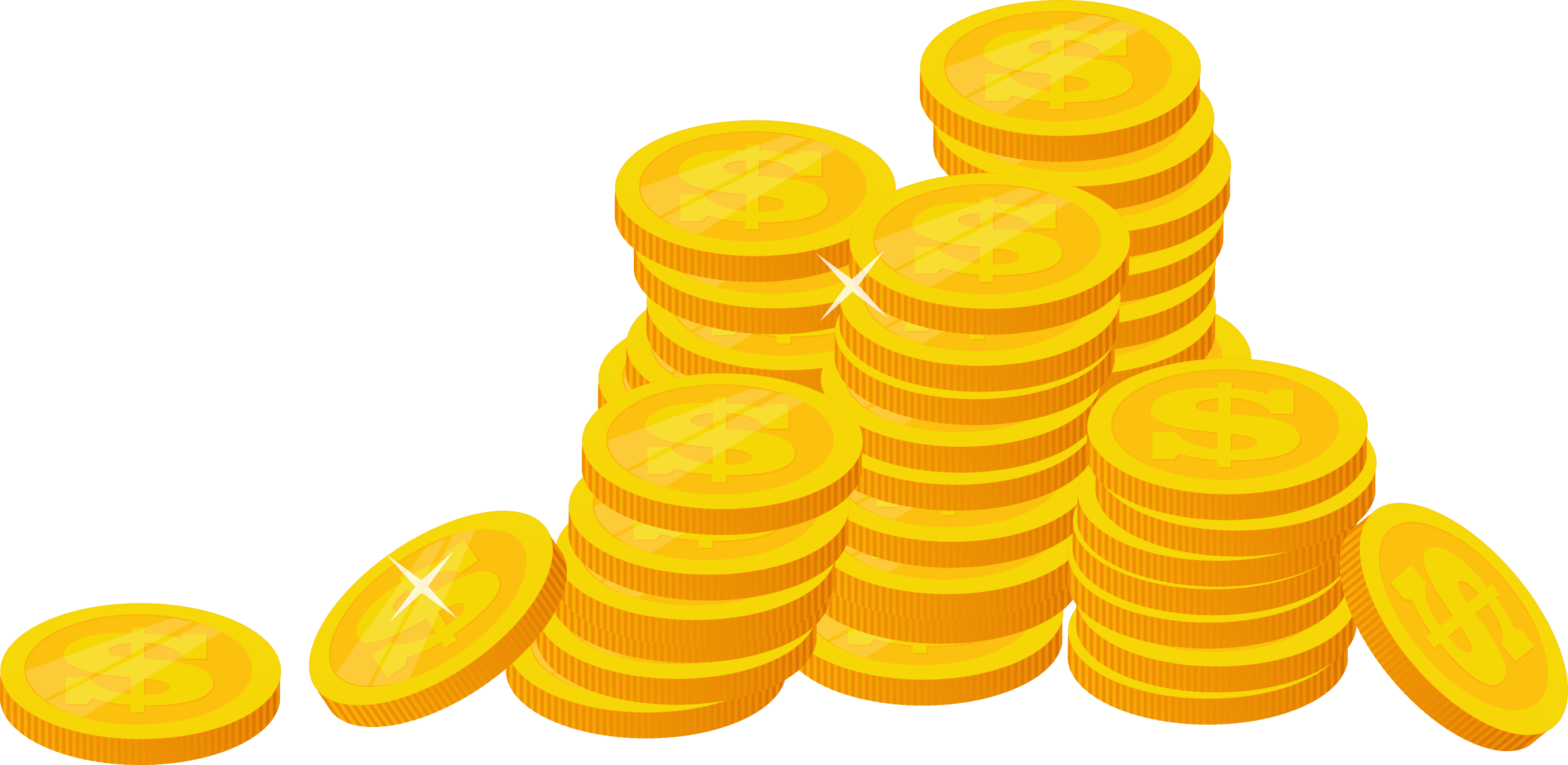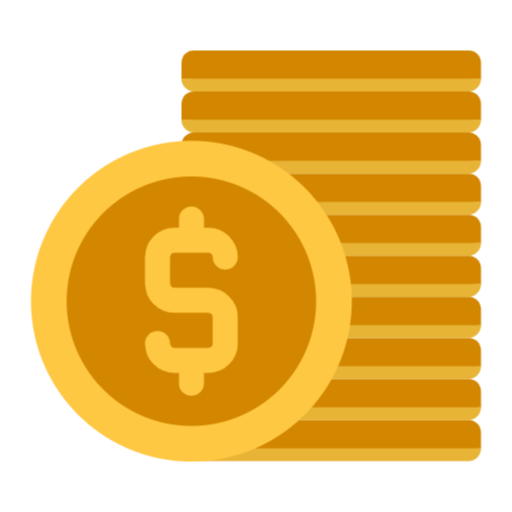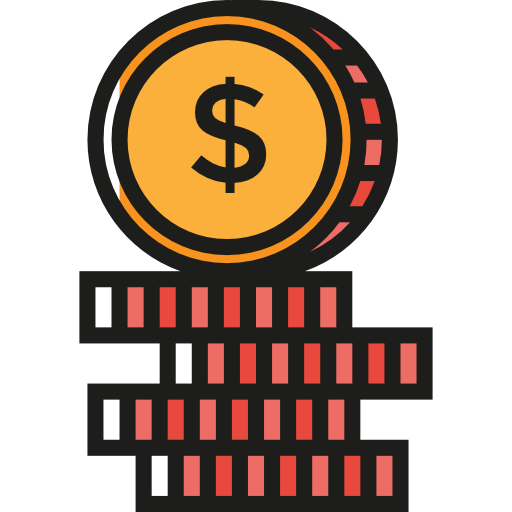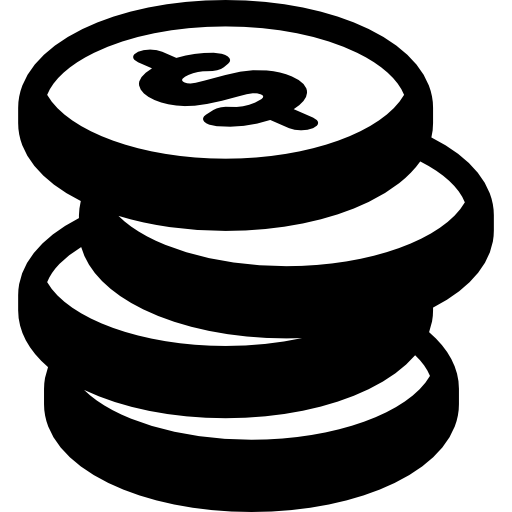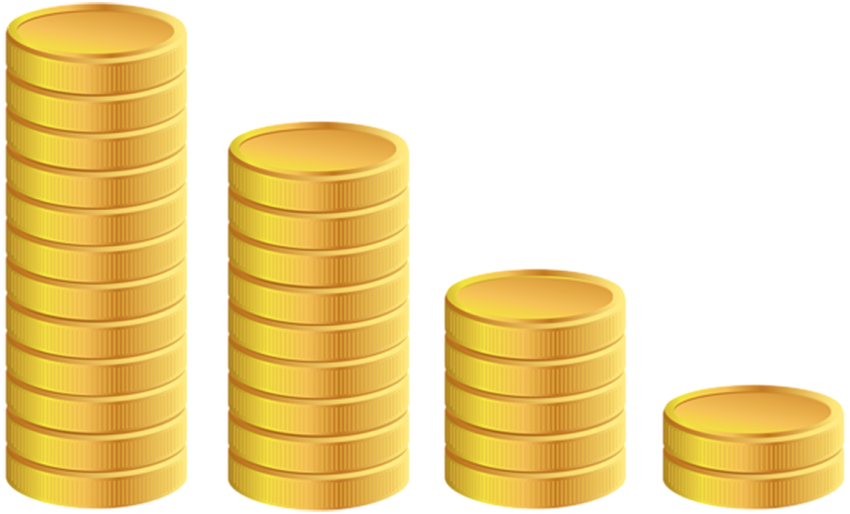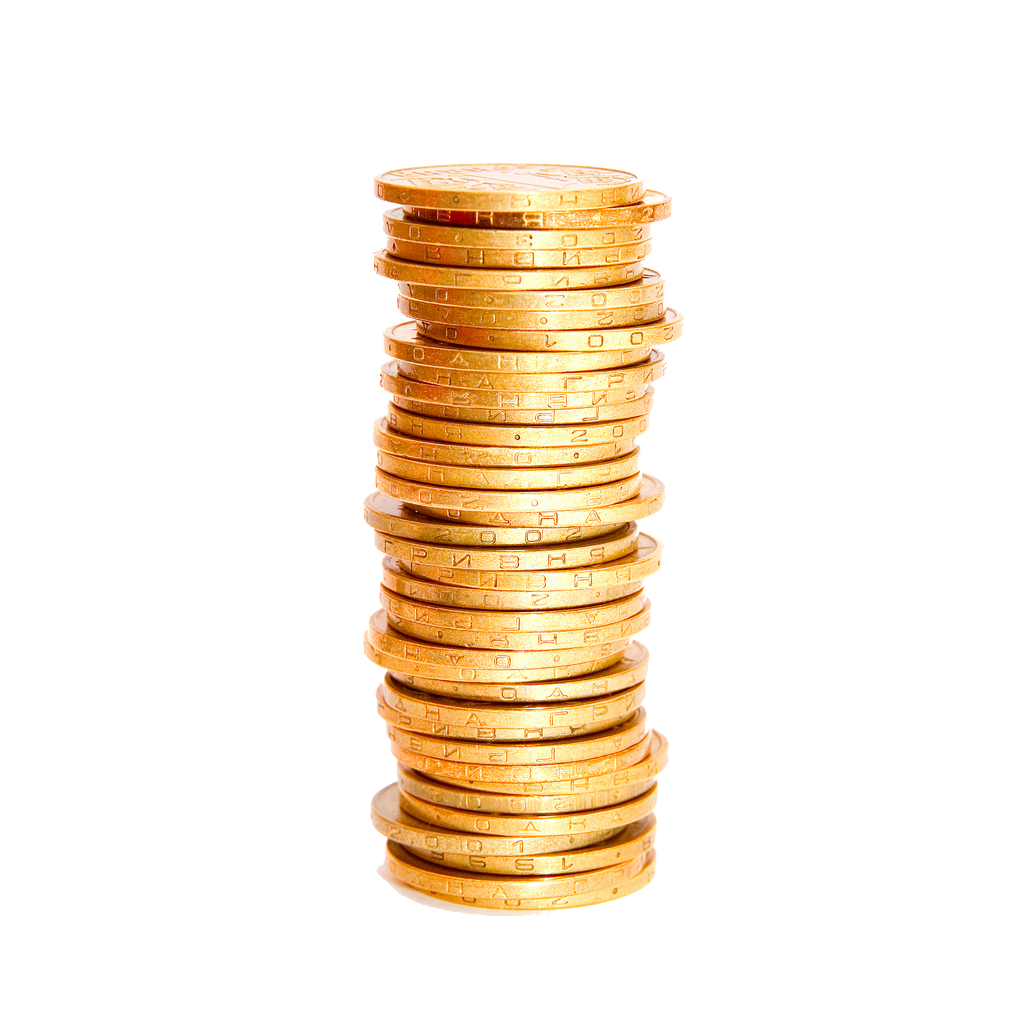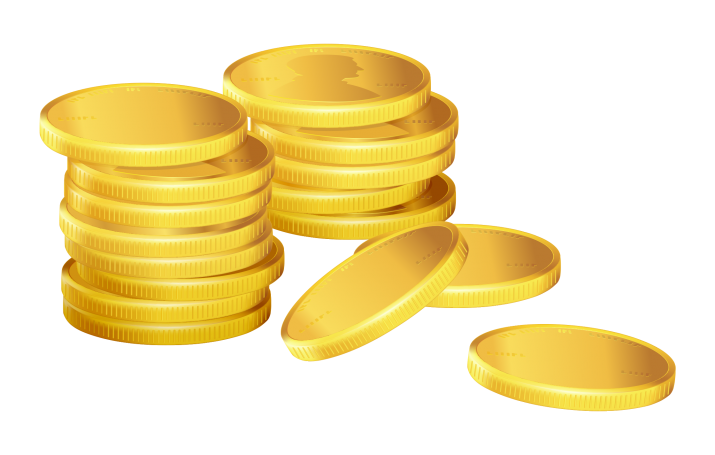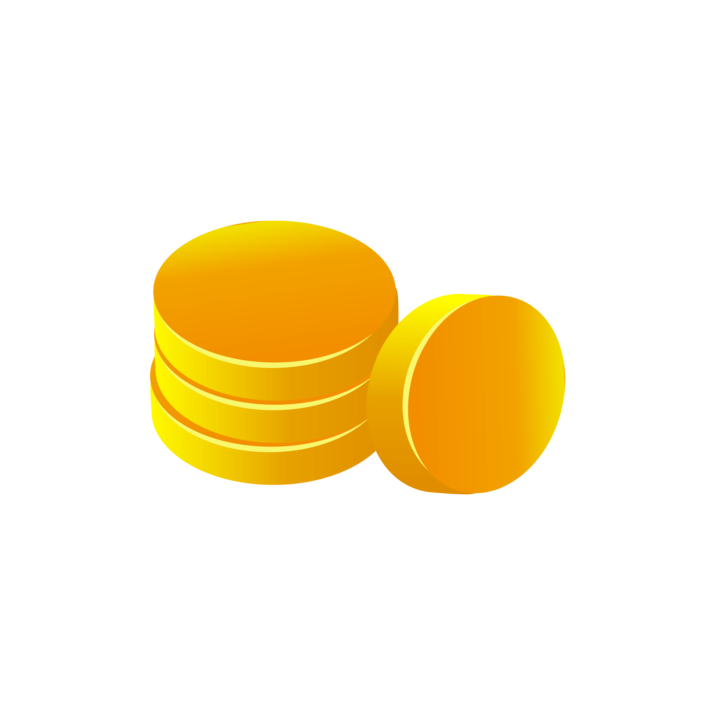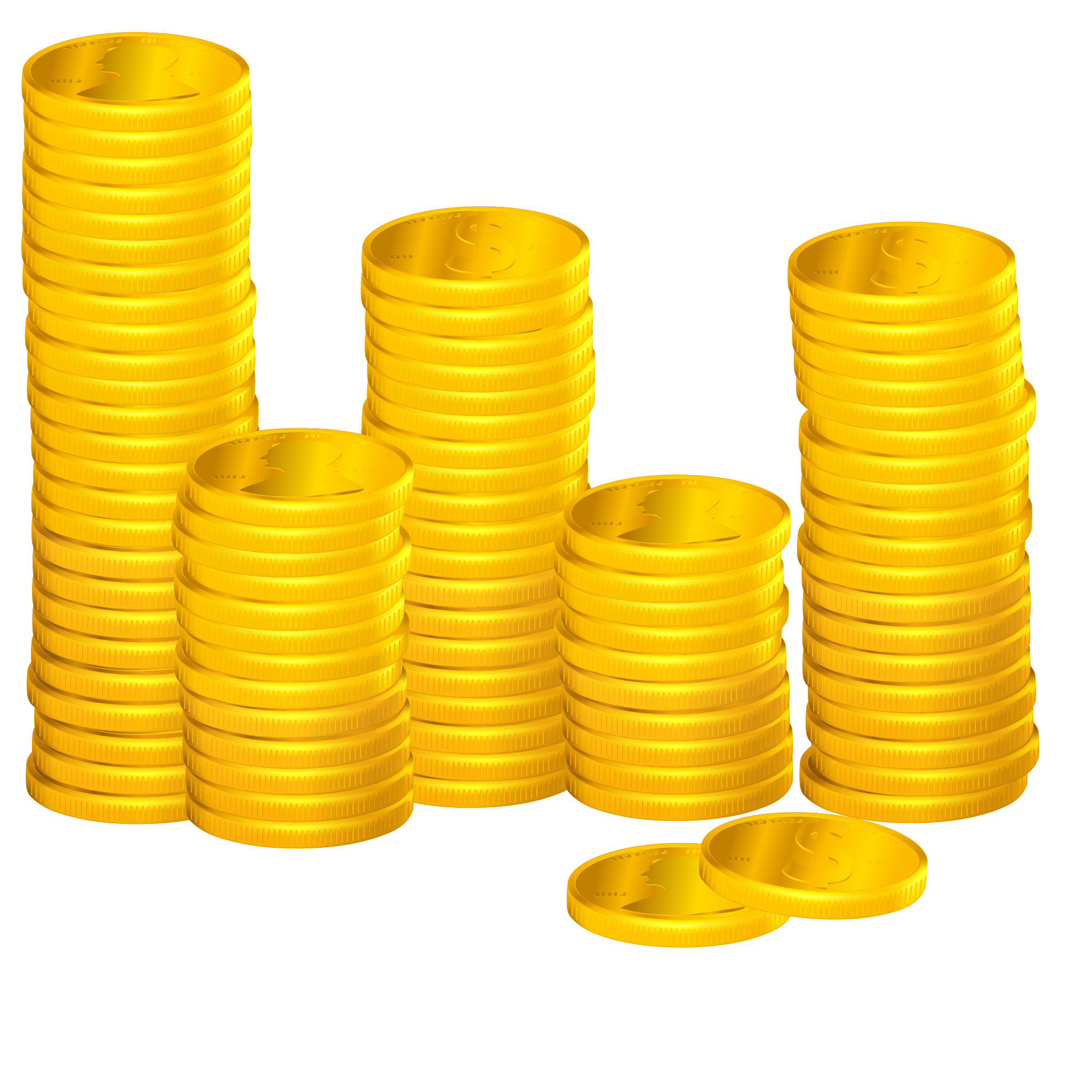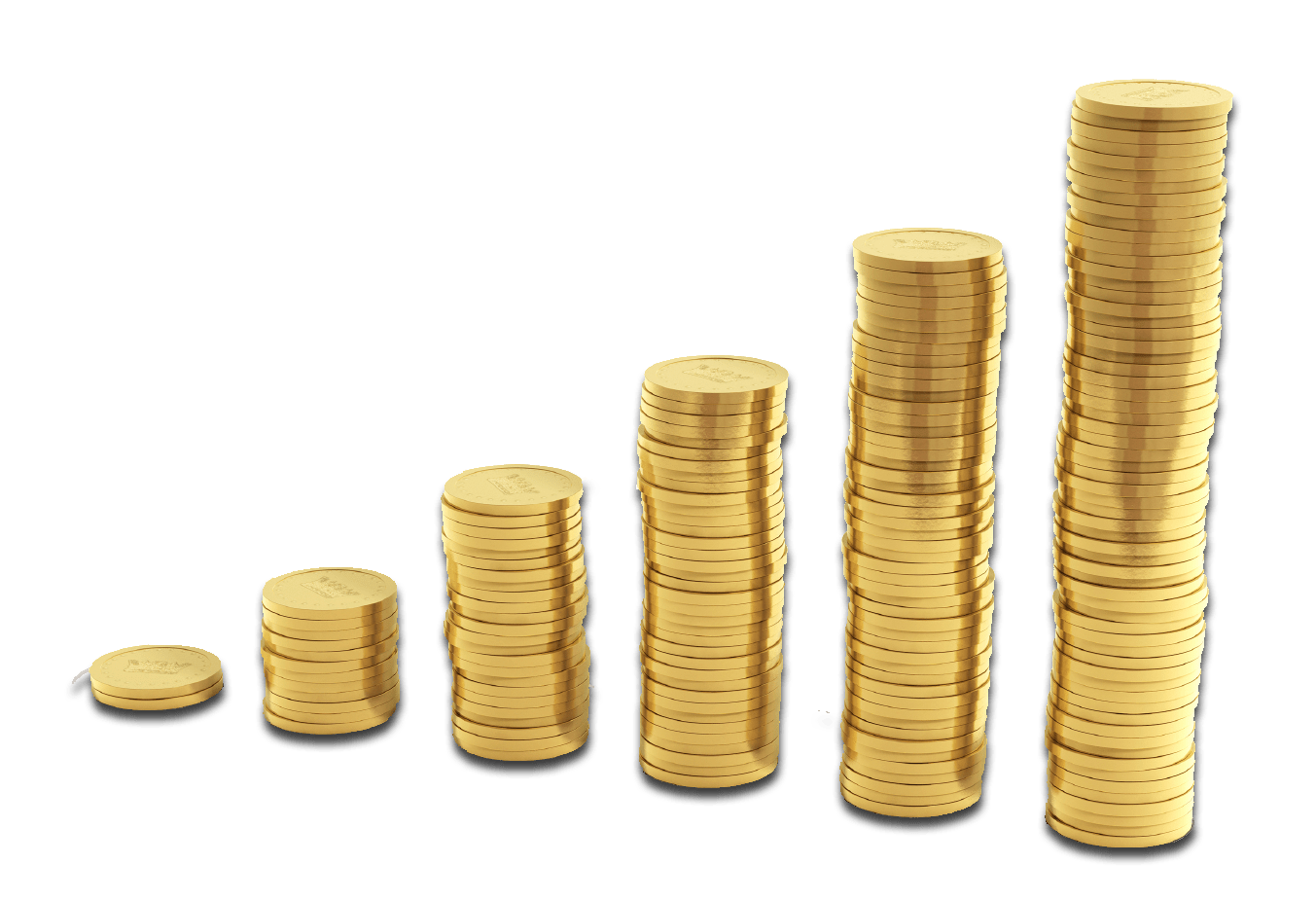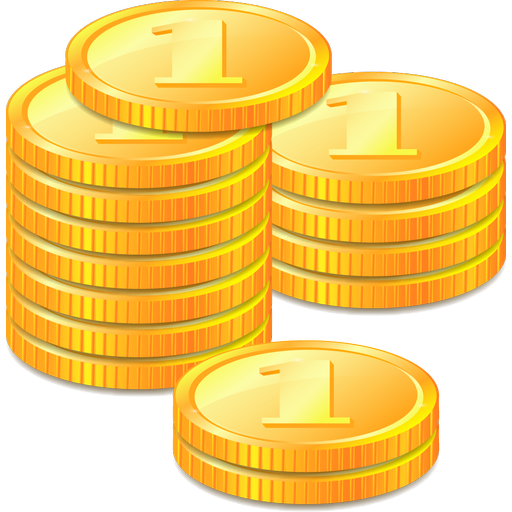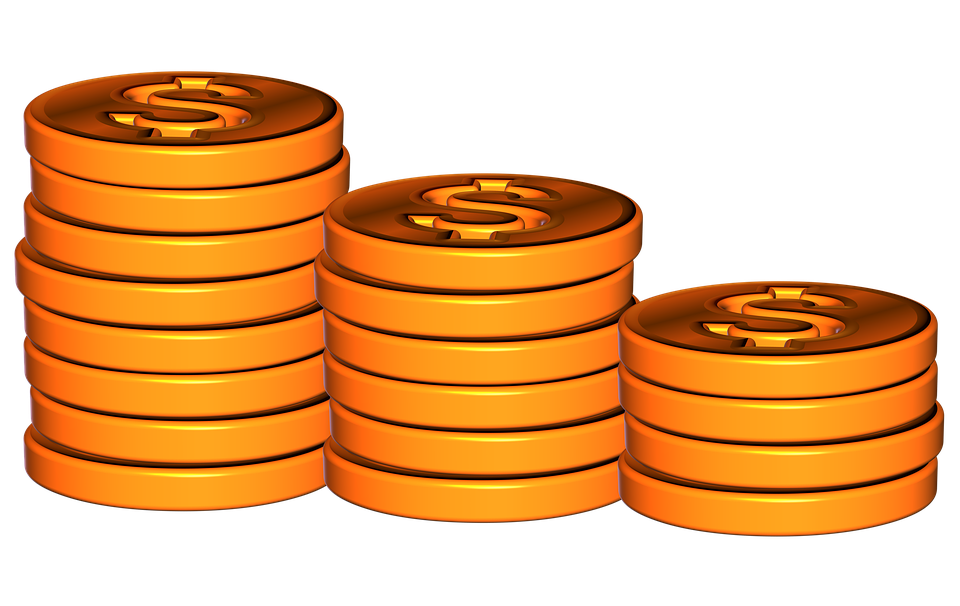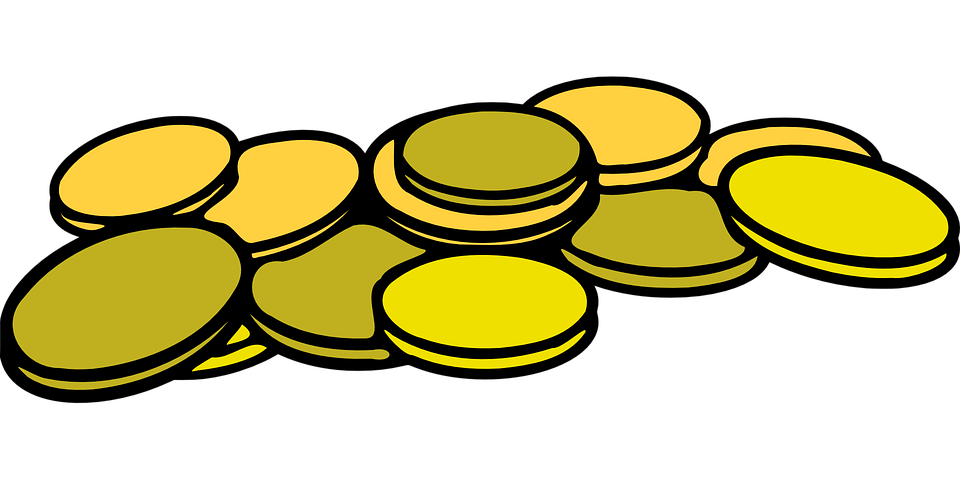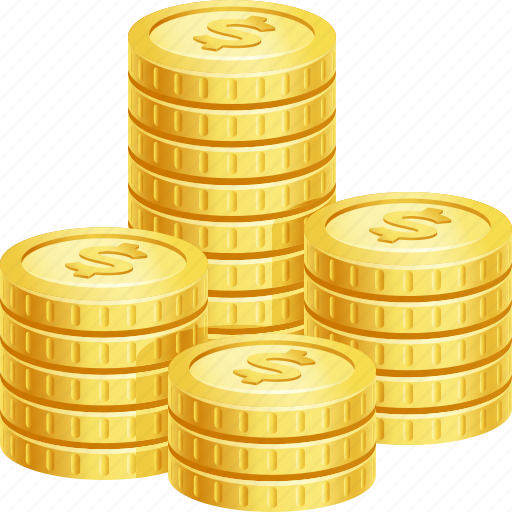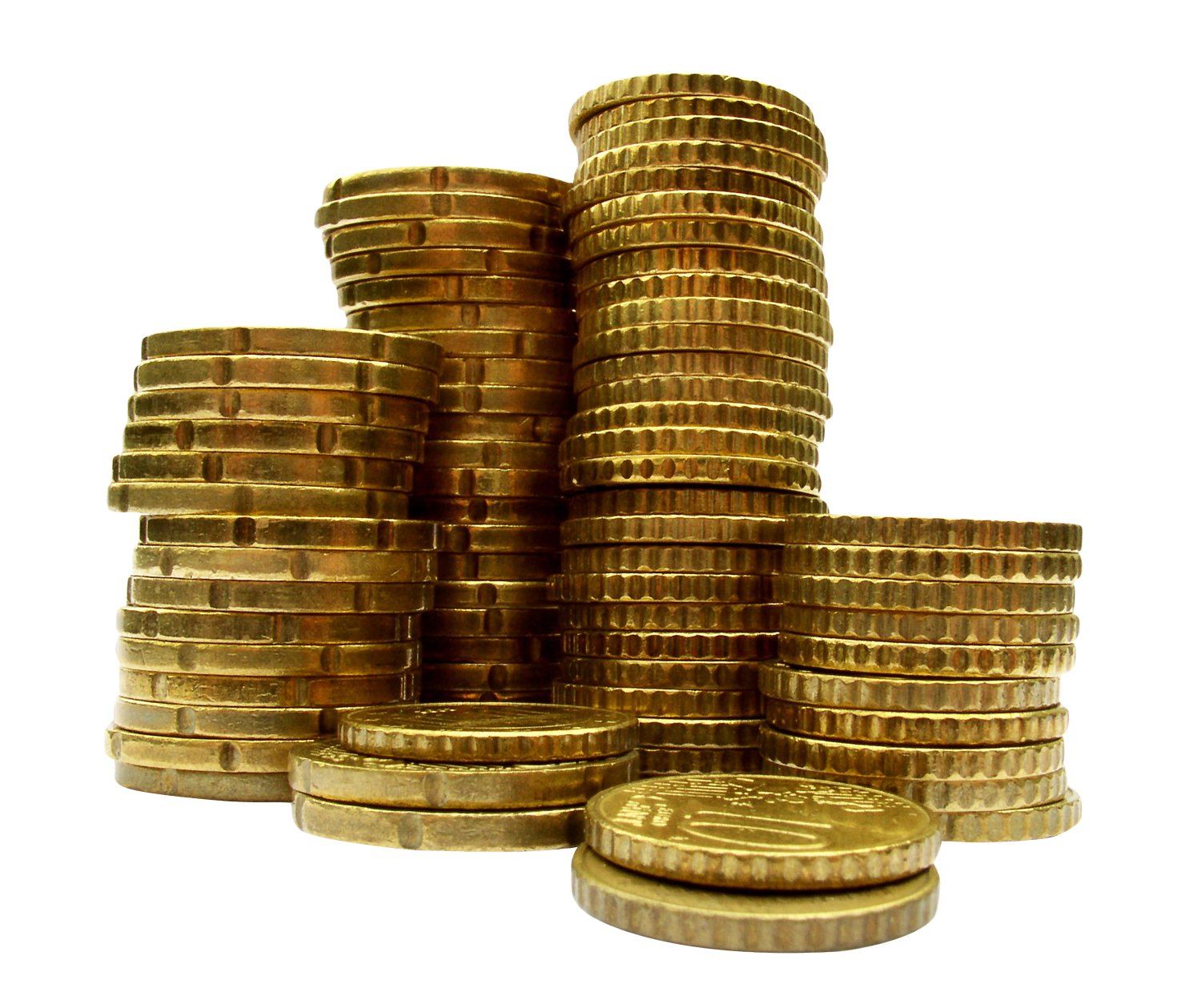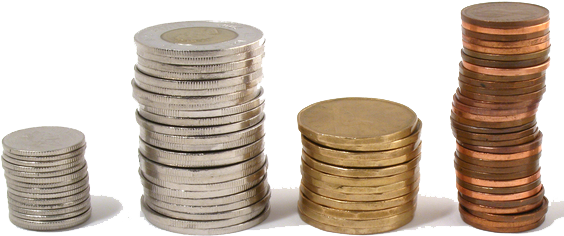Download top and best high-quality free Coin Stack PNG Transparent Images backgrounds available in various sizes. To view the full PNG size resolution click on any of the below image thumbnail.
License Info: Creative Commons 4.0 BY-NC
A coin is a tiny, flat, spherical piece of metal or plastic that is primarily used as a form of legal tender or a means of exchange. To ease trade, they are standardized in weight and manufactured in huge quantities at a mint. Governments are the most common issuers. Images, digits, and writing are frequently found on coins. The two flat faces of coins and medals are referred to as the obverse and reverse. In this context, obverse refers to the object’s front face, whereas reverse refers to the object’s rear side.
The obverse of a coin is known as heads because it frequently portrays the head of a significant figure, whereas the reverse is known as tails.
Coins are often composed of metal or an alloy, although they can also be made of man-made materials. They’re frequently formed like a disc. Bullion coins are coins composed of precious metals that are held in huge numbers. Other coins, which circulate alongside banknotes, are used as money in regular transactions. Except for bullion coins, the highest-value coin in circulation is usually worth less than the lowest-value note.
The face value of circulation coins has periodically been less than the worth of the metal they contain throughout the previous century, for example, due to inflation. If the discrepancy grows considerable, the issuing authority may opt to remove the coins from circulation, maybe issuing new counterparts with a different composition, or the public may elect to melt or hoard the coins (see Gresham’s law).
Some bullion coins consisting of copper, silver, or gold (and, rarely, other metals such as platinum or palladium) designed for collectors or investors in precious metals are exceptions to the norm of face value being higher than content value. The British sovereign, struck by the United Kingdom, the American Gold Eagle, coined by the United States, the Canadian Gold Maple Leaf, minted by Canada, and the Krugerrand, minted by South Africa, are all examples of modern gold collector/investor coins. The Krugerrand, unlike the Eagle and Sovereign coins, has no nominal (purely symbolic) face value.
Coinage metals (including alloys) and other materials (such as porcelain) have been used to make coins for circulation, collecting, and metal investment in the past: bullion coins are frequently more convenient repositories of guaranteed metal amount and purity than other bullion.
The first coins are largely linked to Iron Age Anatolia in the late 7th century BCE, particularly the Lydian state. Early electrum coins were not regulated in weight, and may have been ceremonial artifacts awarded by priests, such as badges or medals (an alluvial alloy of gold and silver with wildly varied proportions, but generally about 40″55 percent gold). Because the composition of naturally occurring electrum is unpredictable, it has a changeable value, which has slowed its development tremendously.
There is no writing (“myth” or “inscription”) on most early Lydian coins, merely a picture of a symbolic animal. As a result, the earliest known deposit of electrum coins is dated primarily by archaeological evidence, with the most commonly cited evidence coming from excavations at the Temple of Artemis at Ephesus, also known as the Ephesian Artemision (which would later evolve into one of the Seven Wonders of the Ancient World).
Because the first lion head “coins” were discovered at that temple and do not appear to have been utilized in trade, these artifacts might have been badges or medals distributed by the temple’s priests rather than coinage. The Anatolian Artemis was the v (Potnia Thêrôn, “Mistress of Animals”), and the stag was her emblem.
Ancient coins were not utilized for commerce and trade for a long period. Even the smallest-denomination electrum coins, which may have been worth a day’s worth of food, would have been too valuable to buy a loaf of bread. Small silver fractions, Hemiobol, Ancient Greek currency struck by the Ionian Greeks in the late sixth century BCE, were perhaps the first coins to be used for retailing on a wide scale.
Download Coin Stack PNG images transparent gallery.
- Coin Stack Investment PNG File
Resolution: 1000 × 451
Size: 517 KB
Image Format: .png
Download
- Coin Stack Investment PNG Photos
Resolution: 2036 × 1406
Size: 223 KB
Image Format: .png
Download
- Coin Stack Investment PNG Photo
Resolution: 1829 × 1120
Size: 1035 KB
Image Format: .png
Download
- Coin Stack Investment
Resolution: 470 × 327
Size: 123 KB
Image Format: .png
Download
- Coin Stack Investment PNG
Resolution: 958 × 663
Size: 551 KB
Image Format: .png
Download
- Coin Stack PNG
Resolution: 512 × 512
Size: 19 KB
Image Format: .png
Download
- Coin Stack Investment PNG HD Image
Resolution: 800 × 678
Size: 52 KB
Image Format: .png
Download
- Coin Stack Investment PNG Free Image
Resolution: 2152 × 2722
Size: 3098 KB
Image Format: .png
Download
- Coin Stack Investment PNG Image HD
Resolution: 1333 × 1193
Size: 320 KB
Image Format: .png
Download
- Coin Stack Investment No Background
Resolution: 1572 × 1888
Size: 687 KB
Image Format: .png
Download
- Coin Stack PNG Free Image
Resolution: 2719 × 1327
Size: 535 KB
Image Format: .png
Download
- Coin Stack PNG HD Image
Resolution: 512 × 512
Size: 33 KB
Image Format: .png
Download
- Coin Stack PNG Photos
Resolution: 512 × 453
Size: 7 KB
Image Format: .png
Download
- Coin Stack
Resolution: 512 × 512
Size: 22 KB
Image Format: .png
Download
- Coin Stack PNG Photo
Resolution: 512 × 512
Size: 12 KB
Image Format: .png
Download
- Coin Stack PNG Images HD
Resolution: 980 × 893
Size: 34 KB
Image Format: .png
Download
- Coin Stack Investment PNG Clipart
Resolution: 850 × 514
Size: 235 KB
Image Format: .png
Download
- Coin Stack Investment PNG Images
Resolution: 600 × 401
Size: 86 KB
Image Format: .png
Download
- Coin Stack PNG Clipart
Resolution: 1024 × 1024
Size: 635 KB
Image Format: .png
Download
- Coin Stack Transparent
Resolution: 715 × 455
Size: 180 KB
Image Format: .png
Download
- Coin Stack Investment PNG Picture
Resolution: 715 × 715
Size: 34 KB
Image Format: .png
Download
- Coin Stack Investment PNG Images HD
Resolution: 2048 × 2048
Size: 1538 KB
Image Format: .png
Download
- Coin Stack Investment PNG Cutout
Resolution: 1353 × 925
Size: 260 KB
Image Format: .png
Download
- Coin Stack No Background
Resolution: 512 × 512
Size: 258 KB
Image Format: .png
Download
- Coin Stack PNG Images
Resolution: 960 × 606
Size: 263 KB
Image Format: .png
Download
- Coin Stack PNG Picture
Resolution: 960 × 480
Size: 104 KB
Image Format: .png
Download
- Coin Stack PNG Cutout
Resolution: 512 × 512
Size: 21 KB
Image Format: .png
Download
- Coin Stack PNG Image
Resolution: 512 × 512
Size: 28 KB
Image Format: .png
Download
- Coin Stack PNG File
Resolution: 512 × 512
Size: 16 KB
Image Format: .png
Download
- Coin Stack PNG Pic
Resolution: 512 × 512
Size: 160 KB
Image Format: .png
Download
- Coin Stack PNG Image HD
Resolution: 600 × 600
Size: 61 KB
Image Format: .png
Download
- Coin Stack Investment PNG Pic
Resolution: 1500 × 1259
Size: 1956 KB
Image Format: .png
Download
- Coin Stack Investment PNG Image
Resolution: 564 × 236
Size: 229 KB
Image Format: .png
Download
- Coin Stack Investment Transparent
Resolution: 596 × 273
Size: 193 KB
Image Format: .png
Download
